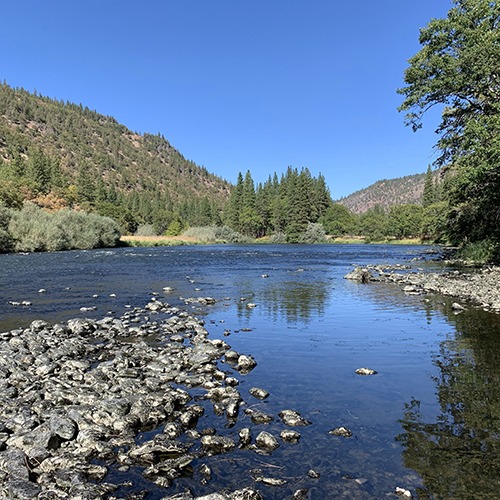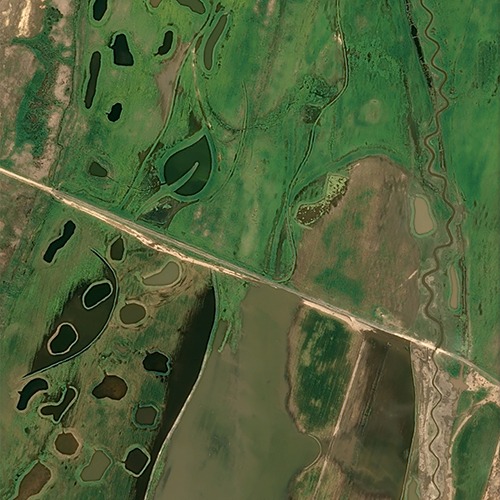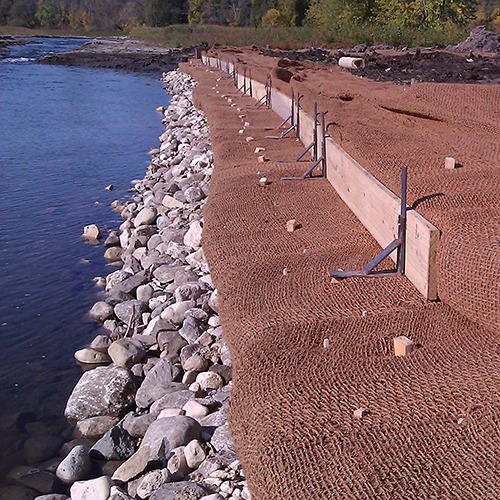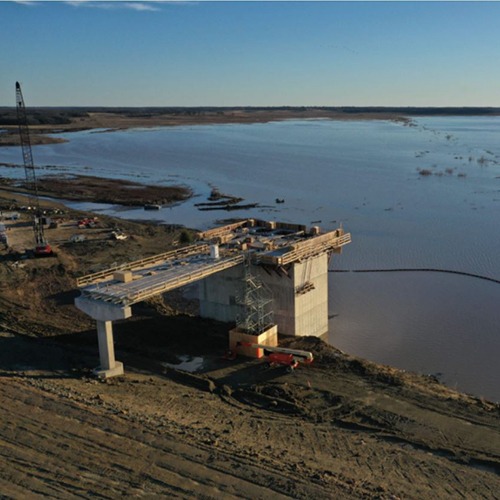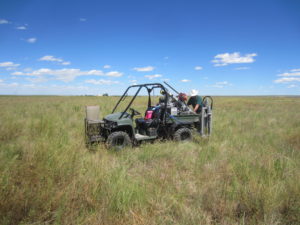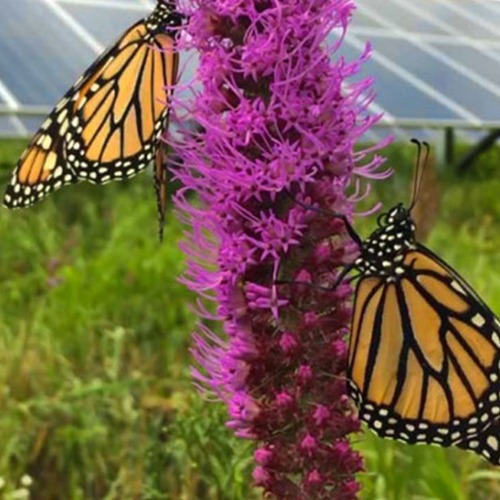
- People
- Working Here
-
-
A Career with an Impact
View Available Jobs »
-
Student Internship Opportunities
Learn More »
-
-
- Safety (EHS&S)
Creating a Culture of Safety
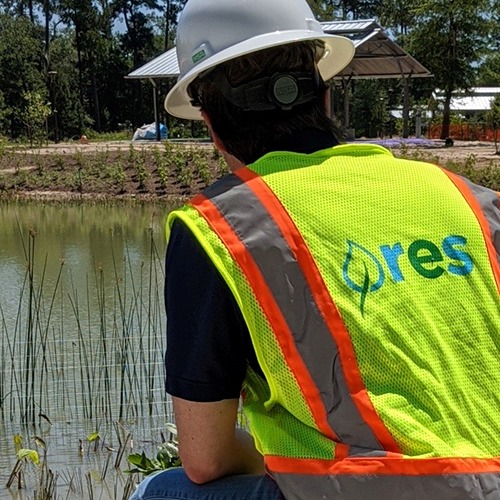
Our team is dedicated to empowering team members with safety leadership and promoting a safe, secure and environmentally- friendly work environment in all facets of our business.
- Landowners
Find Landowner Representative in my State
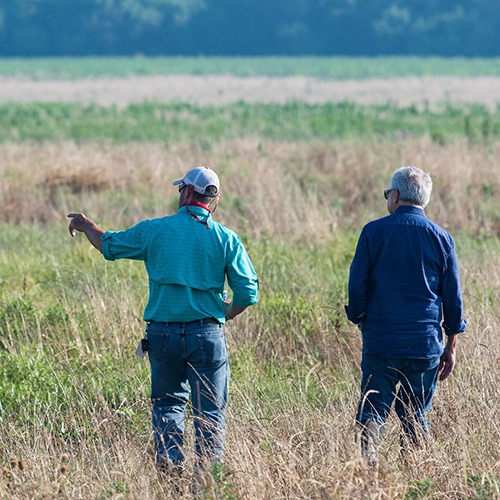 Explore making part of your land, a legacy of resiliency for future generations.
Explore making part of your land, a legacy of resiliency for future generations.
- Vendors
- Working Here
- Capabilities
- Our Solutions
- Our Approach
What is “Active Stewardship”?
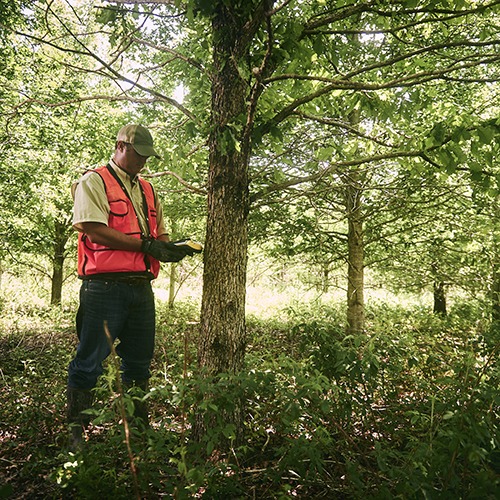 At RES, we don’t build sites and walk away. We design them to thrive, and stick around until they do.
At RES, we don’t build sites and walk away. We design them to thrive, and stick around until they do.
- Industries
- Videos
- Our Solutions
- Places
- Buy Credits
Buy Mitigation Credits
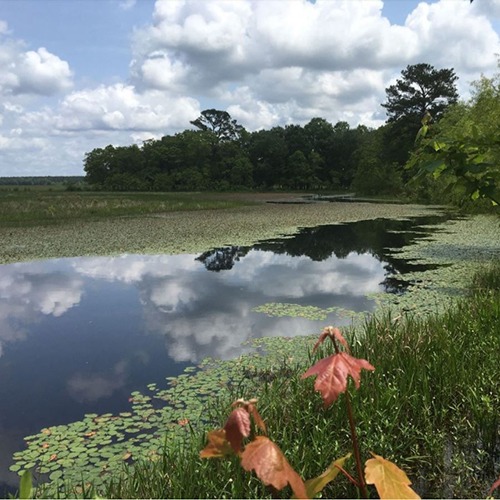 Impacts are sometimes unavoidable. For these situations, we offer ecological offsets in the form of mitigation credits.
Impacts are sometimes unavoidable. For these situations, we offer ecological offsets in the form of mitigation credits.
- Find Projects
Find Projects
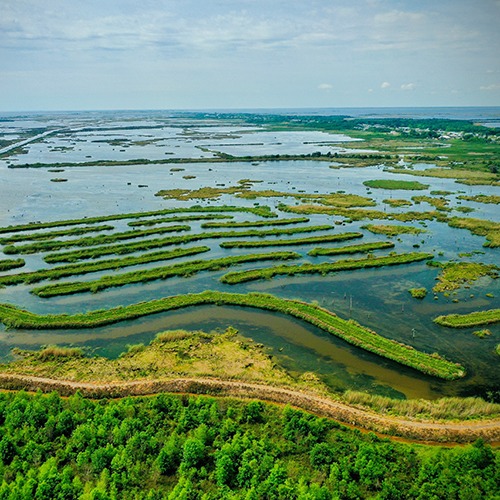 RES delivers resiliency, project by project. Understanding them is the best way to get to know us.
RES delivers resiliency, project by project. Understanding them is the best way to get to know us.
- Search States
Search by State
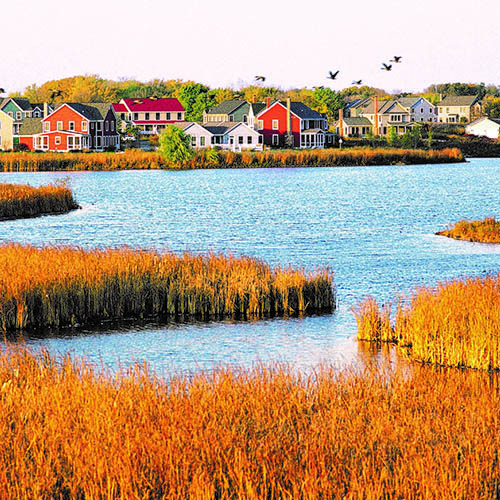 Keeping the ecological balance is an intensely local endeavor. See how we meet the challenge in your area.
Keeping the ecological balance is an intensely local endeavor. See how we meet the challenge in your area.
- Nurseries
-
- Buy Credits
- About Us
- Who We Are
- Leadership Team
Meet our Leadership Team
- Acquisitions
We are growing the RES family.
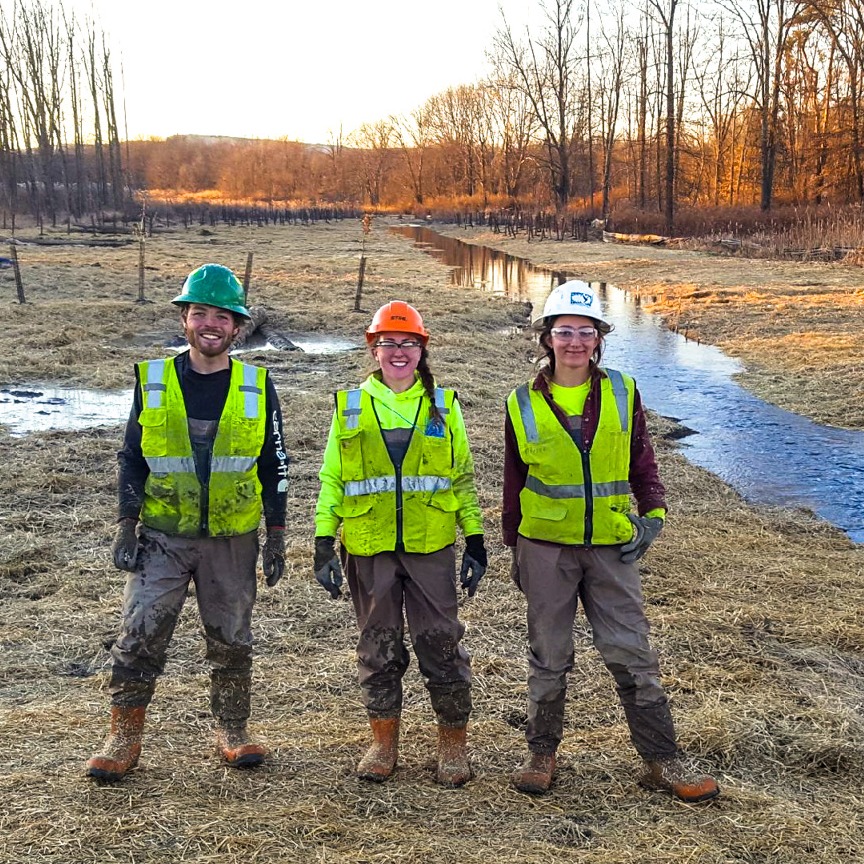 We strengthen our team by bringing on respected teams of experts with local knowledge and experience, who share our vision of a resilient earth.
We strengthen our team by bringing on respected teams of experts with local knowledge and experience, who share our vision of a resilient earth.
- News
- Who We Are
- Restoring at Scale
- Buy Credits
- Contact Us
Newsletter > Saving stranded suckers
Saving stranded suckers
RES mounts a rescue operation prior to dam removal
June 08, 2023
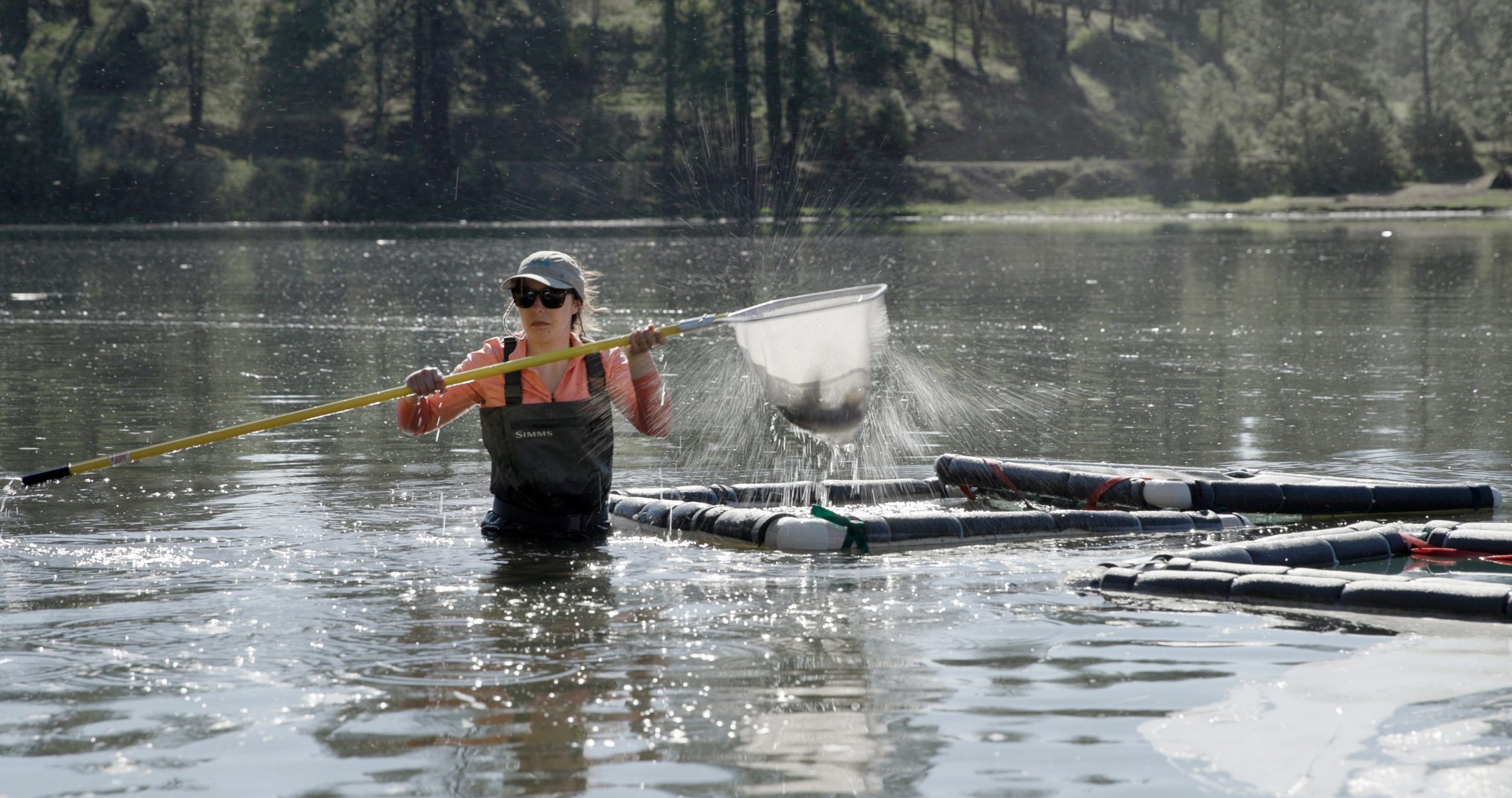
The critically endangered fish are called C’waam and Koptu in the native tongue of the Klamath Tribes in Southern Oregon. While the entire population of these two species of fish is imperiled, a stranded population disconnected from their home waters was in particular danger. Without intervention, hundreds of fish would certainly perish.
Enter RES. As part of the Klamath River dam removal and restoration project, our team was entrusted to lead a complex rescue and relocation effort for these increasingly rare species of suckers—including the C’waam or Lost River sucker (Deltistes luxatus), Koptu or shortnose sucker (Chasmistes brevirostris), and Klamath largescale sucker (Catostomus snyderi).
Daniel Chase, Director of Fisheries, Aquatics and Design for RES’ Western Region, supervised an intense operation that spanned weeks. RES was supported by a broad team that included representatives from the Klamath Tribes, the Karuk Tribe, River Design Group, Oregon Department of Fish and Wildlife, California Department of Fish and Wildlife, Bureau of Land Management, and U.S. Fish and Wildlife Service in carrying out the important effort.
It is hard to overstate just how important the C’waam and Koptu are to tribal people in the Upper Klamath Basin. Since time immemorial, the fish had always returned to the same streams and springs. They always arrived just in time to save the community from starvation after the harsh winter exhausted other food supplies. The return of the c’waam and koptu meant life—immediate protein in staggering abundance—a gift from the hand of the Creator. Ceremonies were built around these prized fish.
Today, for numerous reasons that include the loss of wetlands and resulting degradation in water quality, the fish are critically endangered. In normal circumstances, the C’waam and Koptu are naturally found in a few water bodies in the Upper Klamath Basin, remnants of ice age lakes in Southern Oregon. But these are not normal circumstances.
Hundreds of the fish were found in places they do not belong and cannot long survive – in hydroelectric reservoirs downstream of their native habitat. These reservoirs are scheduled to soon be drained as part of the Klamath River dam removal and restoration project.
On a cool evening in late April, just as the sun began to set, three boats were launched into Iron Gate Reservoir in far Northern California for the first in a series of nighttime operations to rescue and relocate C’waam and Koptu. A similar effort was launched in May in an Oregon Reservoir behind J.C. Boyle Dam.
This rescue and relocation plan had been in development for over a decade, having been identified as a required task before the dams could be taken down. With more than 40 people and a dozen organizations involved, the overall effort caught more than 520 suckers by setting more than 350 nets and fishing more than 270 cumulative boat hours. RES had staff onsite 24/7, and our rescue team often included up to 12 people working on boats in the middle of the night, yet everyone worked safely and efficiently. RES coordinated the rescue plan and operations, with our role ending as the suckers were loaded onto transport trucks and into the custody of USF&WS and Klamath Tribes. The work across multiple reservoirs enabled the relocation of approximately 390 rare and imperiled suckers that will now have the opportunity to contribute to recovery and management actions.
The team was exhausted, but proud of the epic effort and outstanding result. “Our sucker rescue team was so heartened by the appreciation and affirmation we received from Alex Gonyaw, senior biologist in the Klamath Tribes Aquatics Department, who played a key role in this operation,” Dan noted. “Dr. Gonyaw, who kept members of the Klamath Tribes informed during the entire undertaking, relayed to us the positive reactions from tribal members who were closely following our progress.”
“We received resoundingly positive feedback on the professionalism and work ethic of the team from KRRC, the agencies, and the Tribes that participated in or observed the operation. We were encouraged by the response from the different constituencies who voiced their appreciation for the substantial effort and resources brought to bear by our team. The team was collaborative, inclusive, and demonstrated the RES approach to the Klamath Project that has helped us navigate a challenging landscape for several years.”
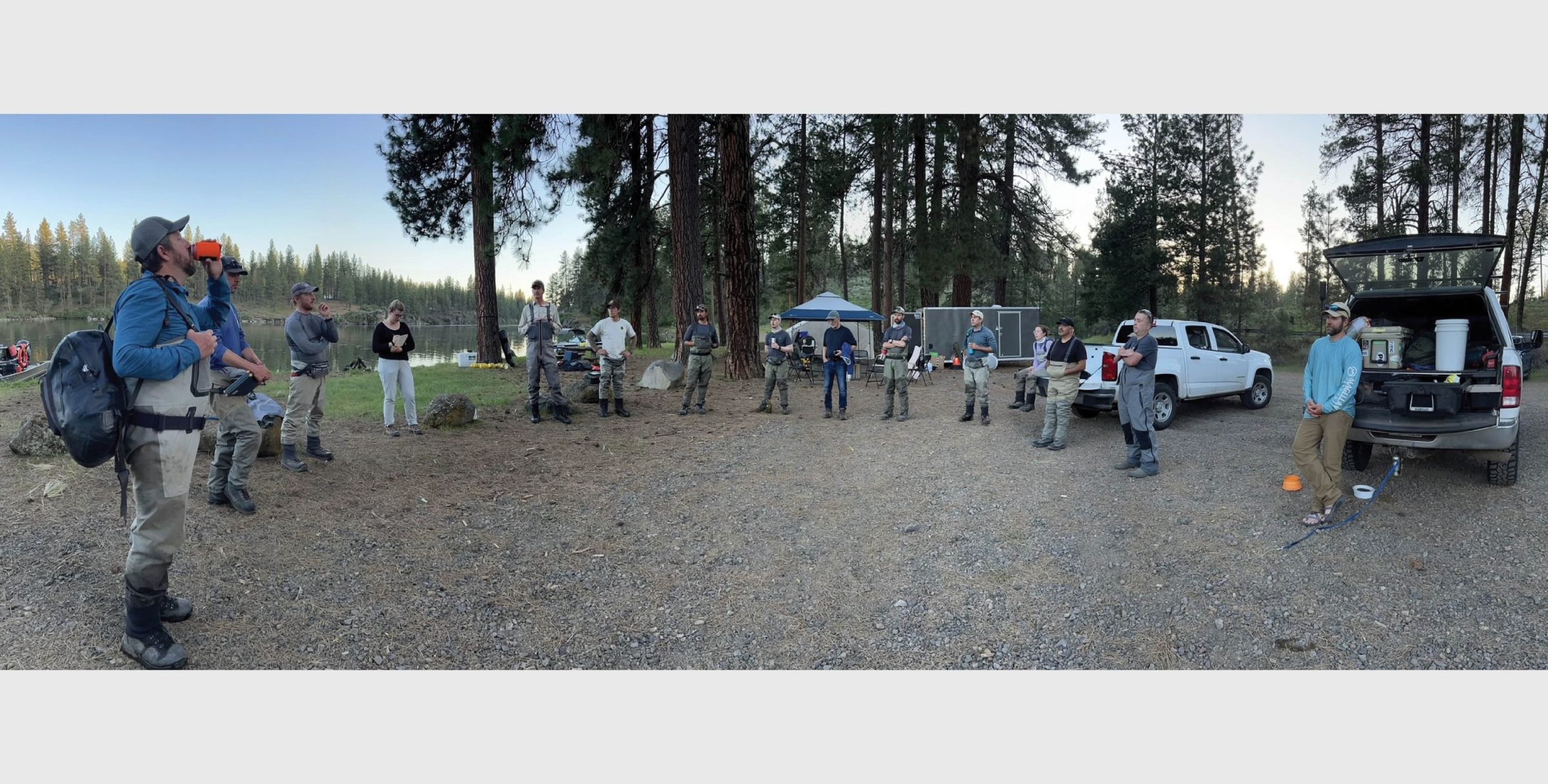
Catching suckers is a nighttime operation. Safety is paramount, and the team kicked off every evening with a “tailgate meeting” to tightly coordinate crew rosters and plans for each of the three boats involved, as well as review safety best practices. Rescuing these suckers, pre-dam removal, has been in planning for a decade. Authors, photographers, and journalists joined the effort on selected evenings. This night’s crew at J.C. Boyle Reservoir included staff from Klamath Tribes, RES, and the Oregon Department of Fish and Wildlife, along with author Jacques Leslie, whose writing tracks the decline and restoration of the Klamath Basin. Photo credit: Ken Sanchez
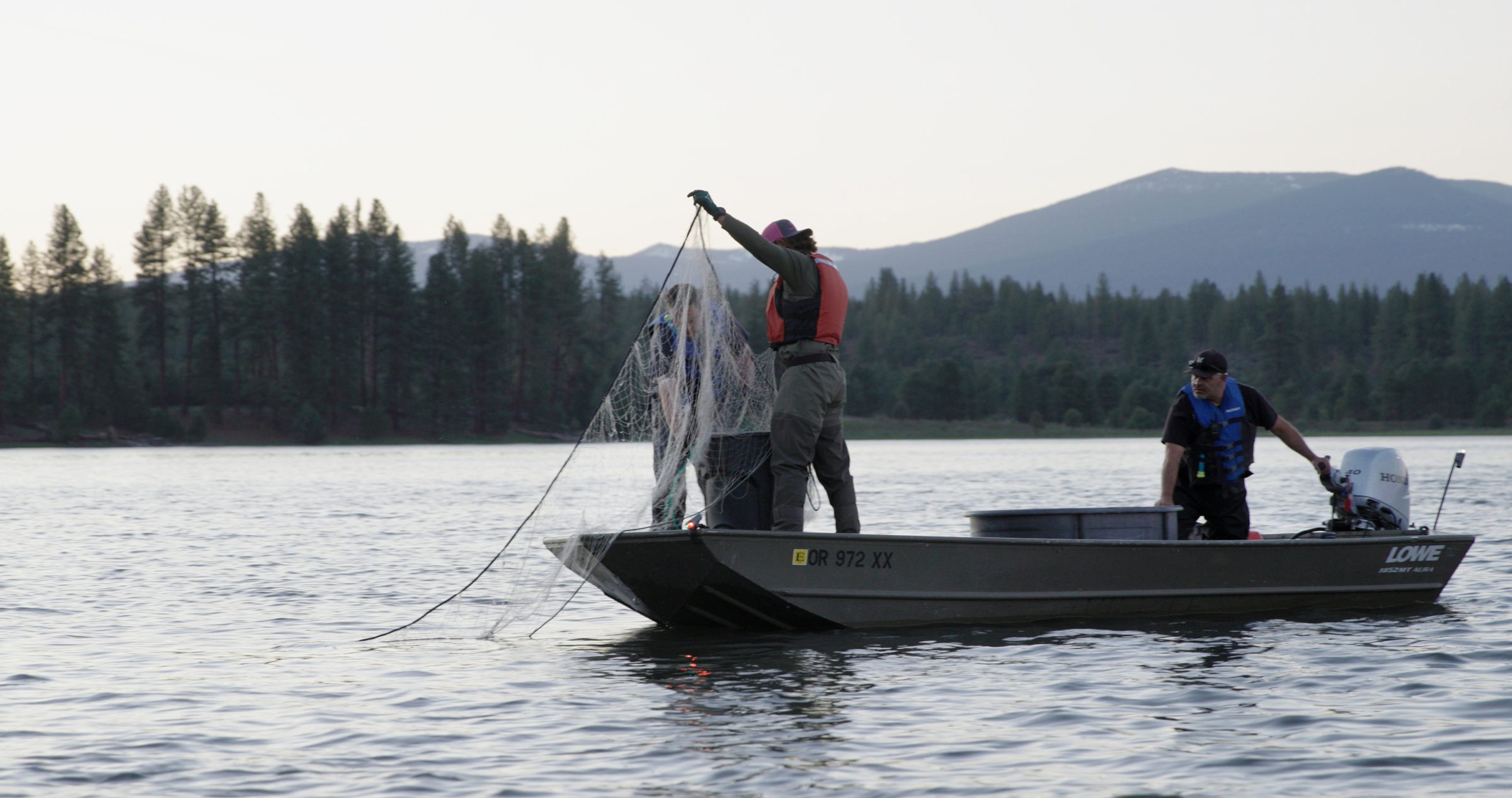
“Klamath Tribes Boat, this is RES Boat, do you copy?” Three boats, each staffed by an experienced crew of biologists from RES, the Klamath Tribes and River Design Group, all stayed in radio contact throughout the night. Here, Dylan Keel, RES ecologist, deploys a net from the Klamath Tribes boat. At the helm is James Esqueda, Klamath Tribes member, and helping with the net is Dr. Alex Gonyaw, Klamath Tribes senior fisheries biologist. Photo credit: Shane Anderson
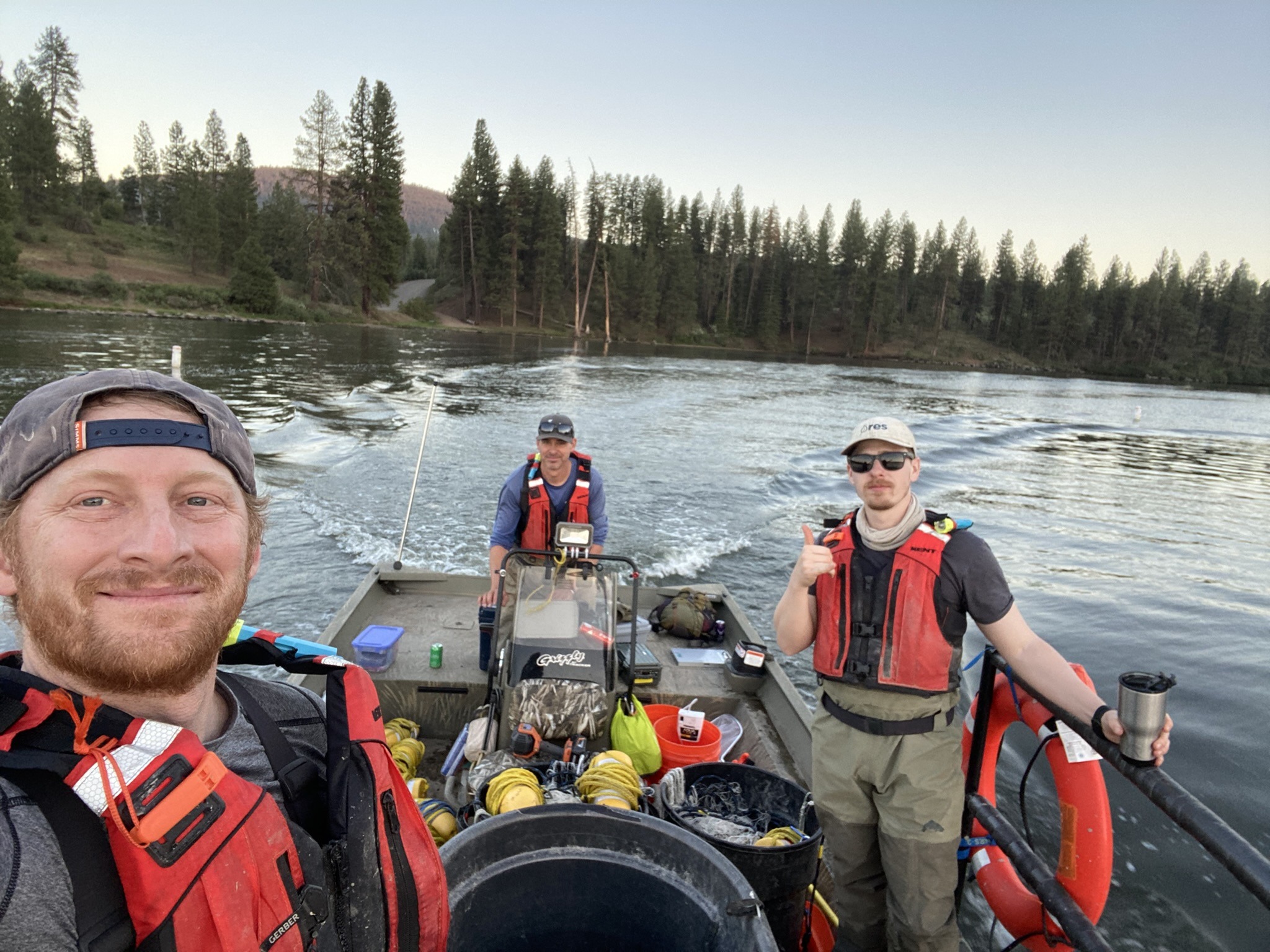
The RES boat heads out for the night at J.C. Boyle Reservoir, carrying Dan Chase (left), RES director of fisheries and the team lead for the sucker salvage operations, along with RES fisheries staff Joel Ophoff (captaining vessel) and John Lang (right). Photo credit: Dan Chase
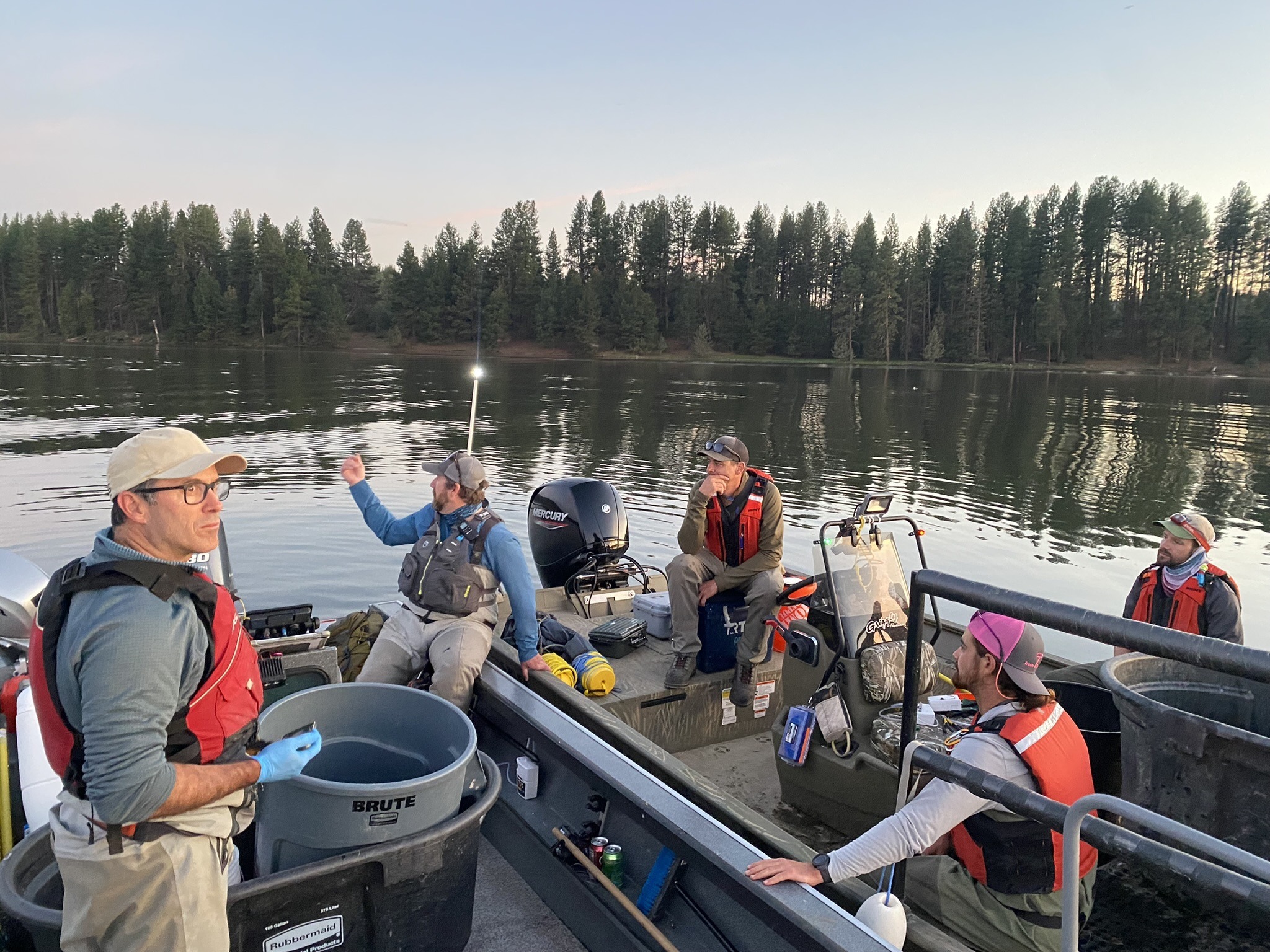
Nets were first cast around sunset. Crews on the RES Boat and River Design Group Boat took advantage of the remaining daylight to discuss net set locations and conditions while the nets did their work. Photo credit: Dan Chase
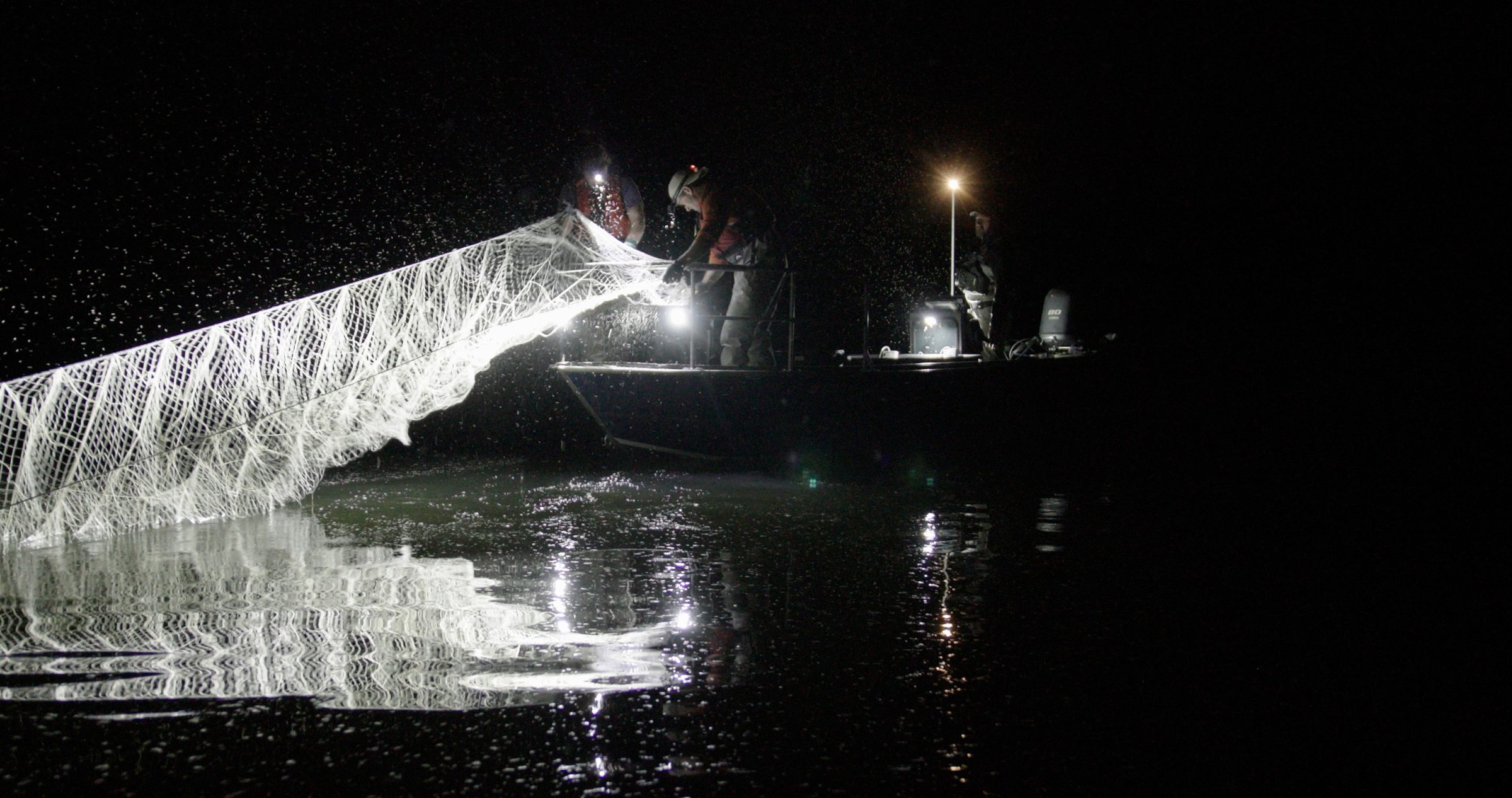
Crews set and checked nets throughout the night to catch these rare fish. At times this required them to work in challenging conditions, like this large swarm of bugs the crew of the River Design Group Boat is contenting with here. Photo credit: Shane Anderson
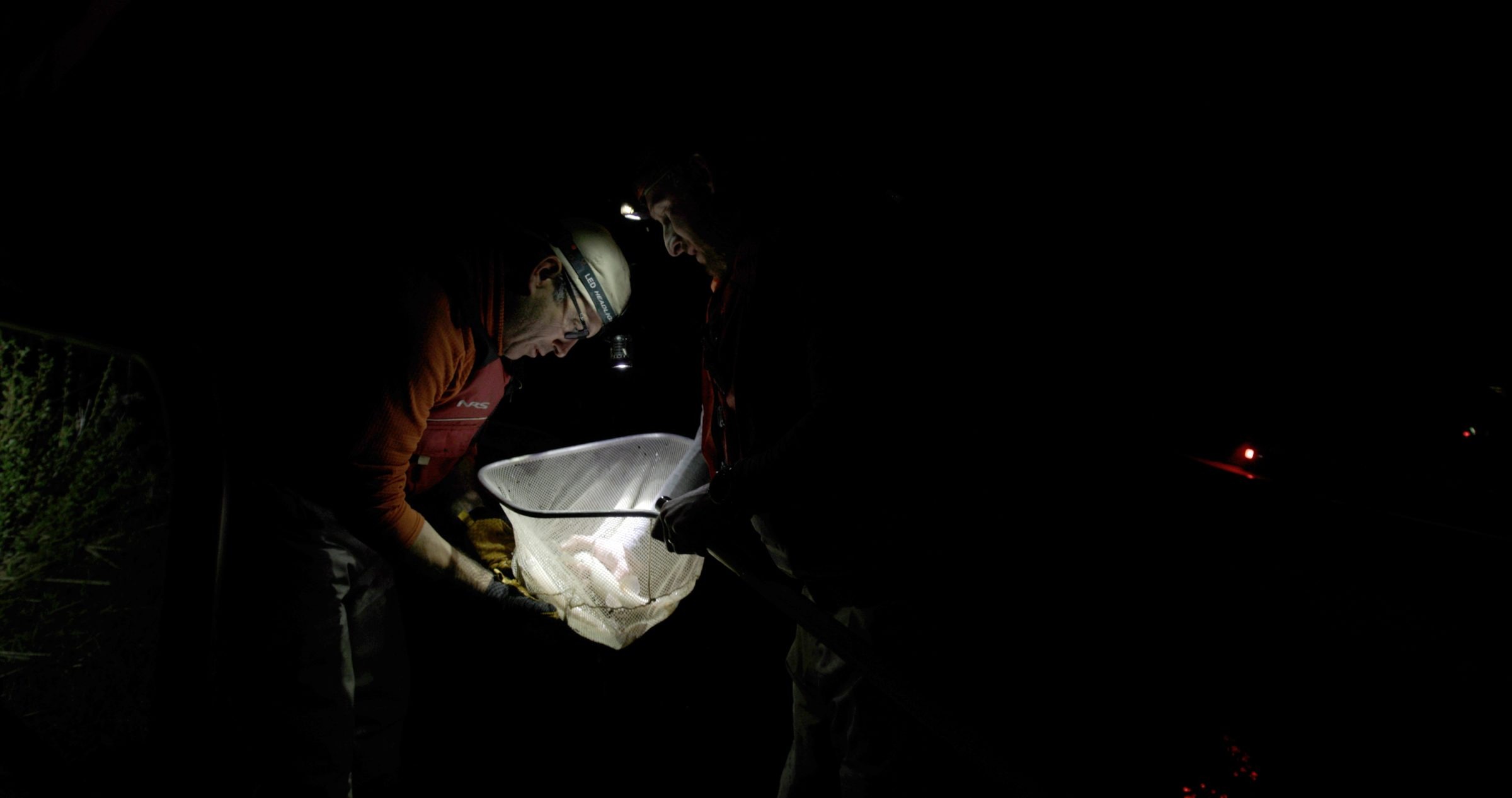
Fish were transferred one by one from boats to net pens, where they had more freedom to move until morning, when it would be time for processing and transfer to hatchery trucks. Photo credit: Shane Anderson
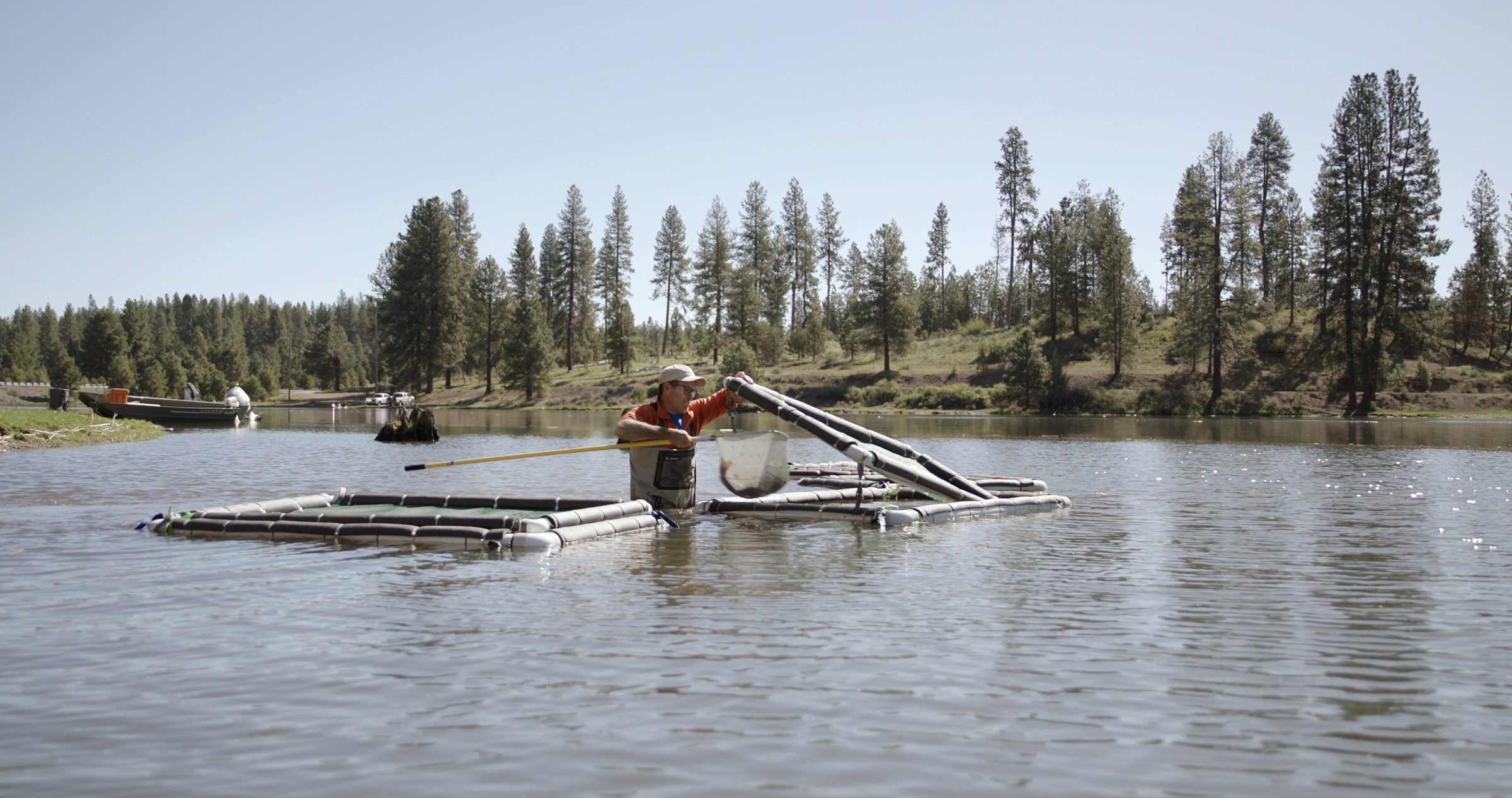
Net pens served as a staging area for each night’s catch. Photo credit: Shane Anderson

RES fisheries biologist Olivia Vosburg starts the morning moving a single sucker out of a net pen and onward to the “fish processing” station where it would be identified to species, tagged, and have a genetic sample collected. This process was repeated for hundreds of suckers salvaged over the two-week operation. Photo credit: Shane Anderson
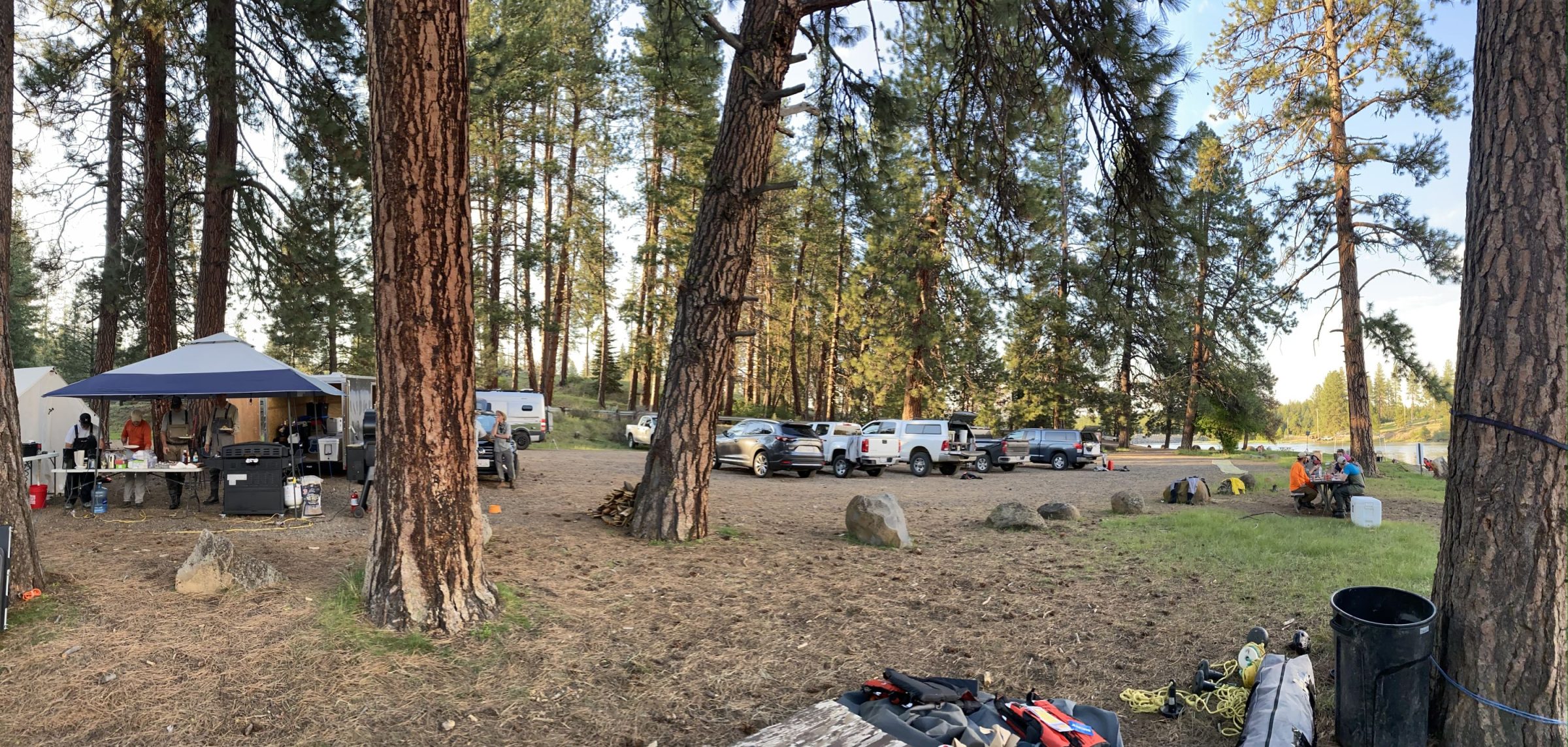
“Fish Camp” was home base at each reservoir fished. Pictured here was the set up for the weeklong effort at J.C. Boyle Reservoir. The tent (left) was camp kitchen, where RES senior regulatory lead Ken Sanchez served as cook and host. Photo credit: Dan Chase
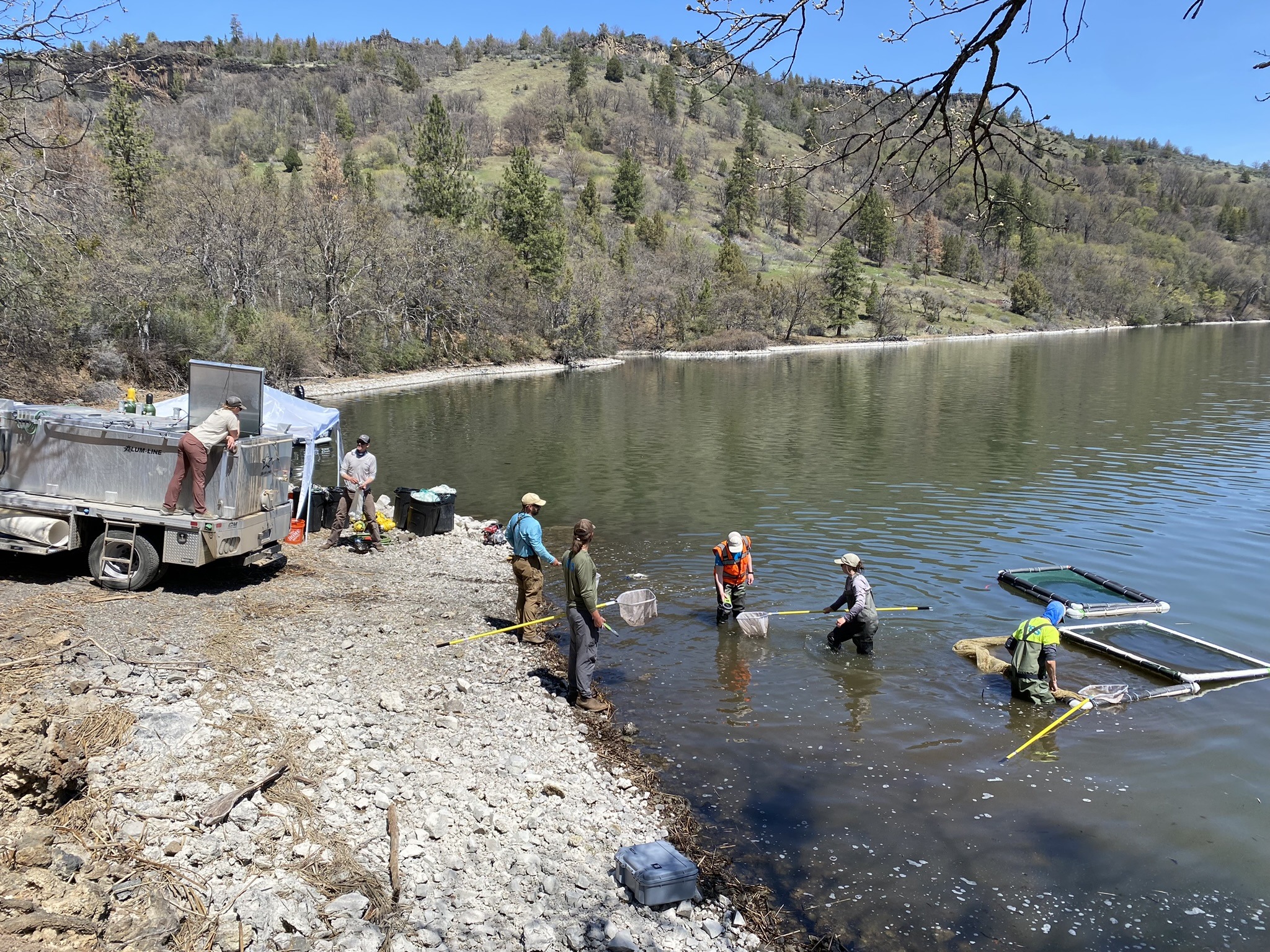
The fish continue their journey from net pens to U.S. Fish and Wildlife Service (USFWS) hatchery trucks, where after processing, they go on to temporary homes in secure ponds away from the reservoirs while their genetic samples are analyzed by USFWS. Photo credit: Dan Chase
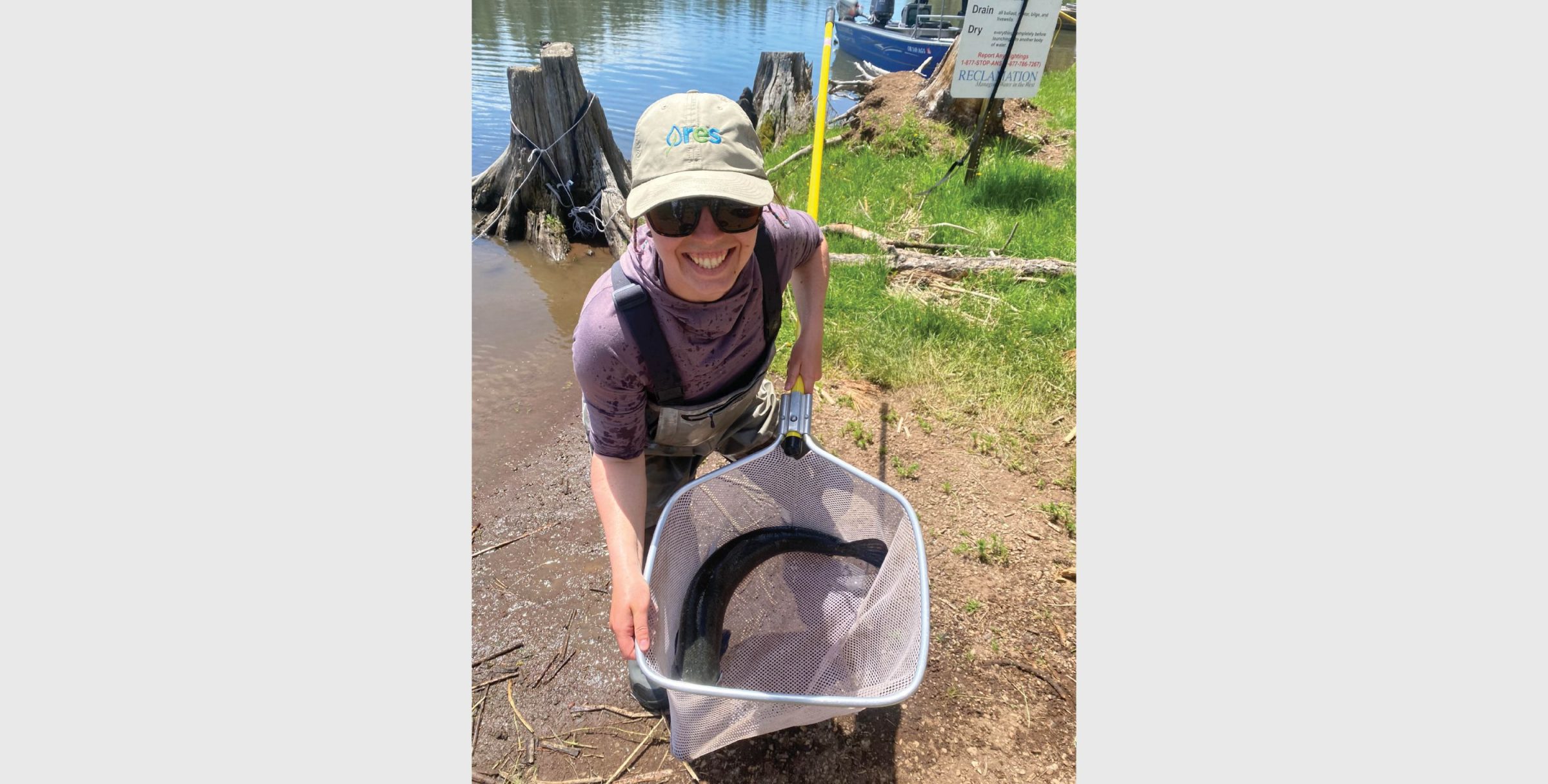
RES fisheries biologist Olivia Vosburg was delighted to be relocating a large C’waam (Lost River sucker) during the load-up of the USFWS transport truck. Just like the Koptu (shortnose sucker), the C’waam originates from further upriver in the Upper Klamath Basin, where both species’ numbers have declined dangerously. Each sucker moved represented a second chance for the fish that had otherwise been disconnected from the Upper Klamath Basin and would now have a chance to contribute to recovery or management actions. Photo credit: Dan Chase
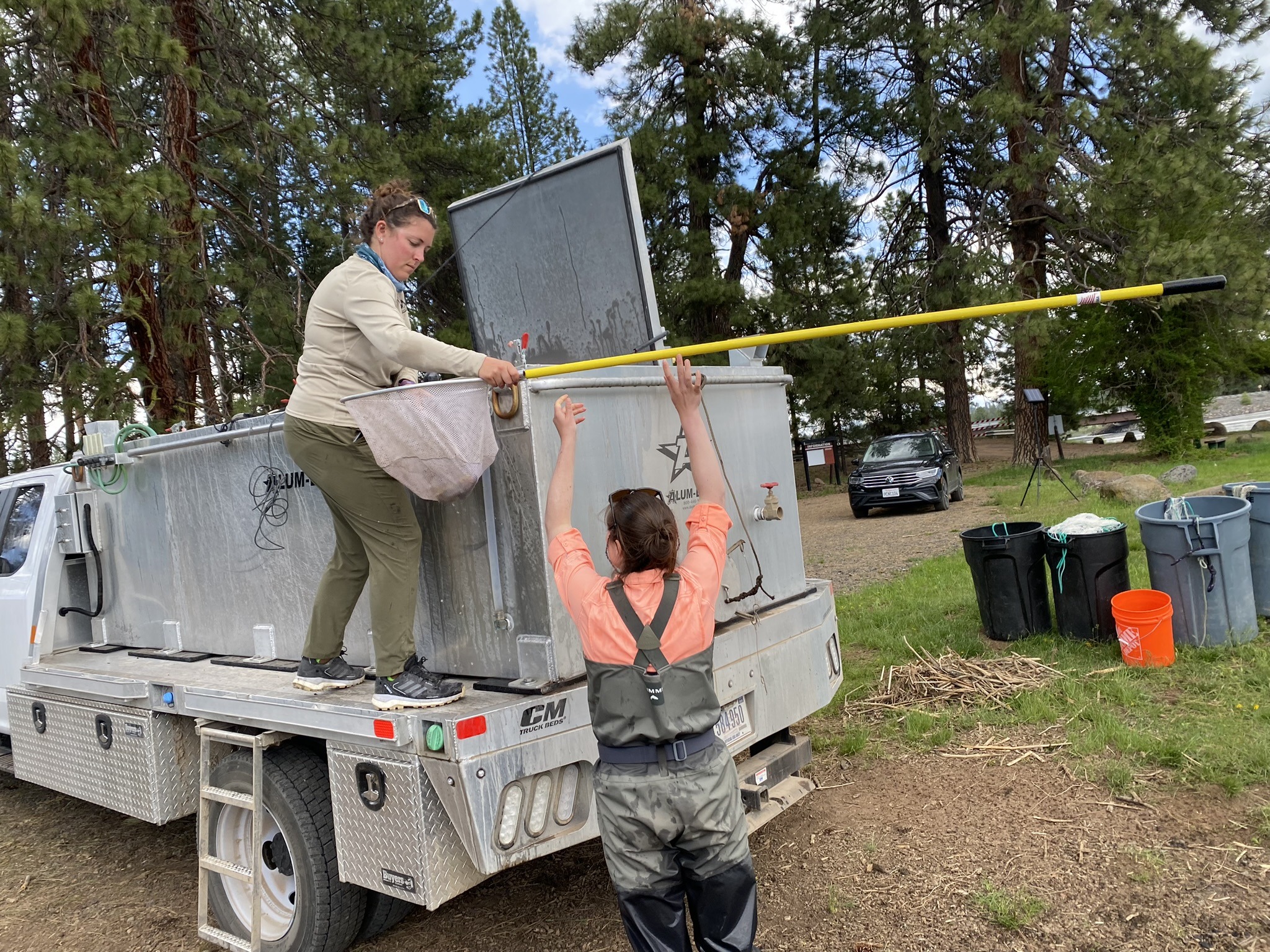
It’s a human “fish ladder” as Olivia Vosburg hands off one of the suckers to a USFWS staffer during transfer to a hatchery truck. Photo credit: Dan Chase
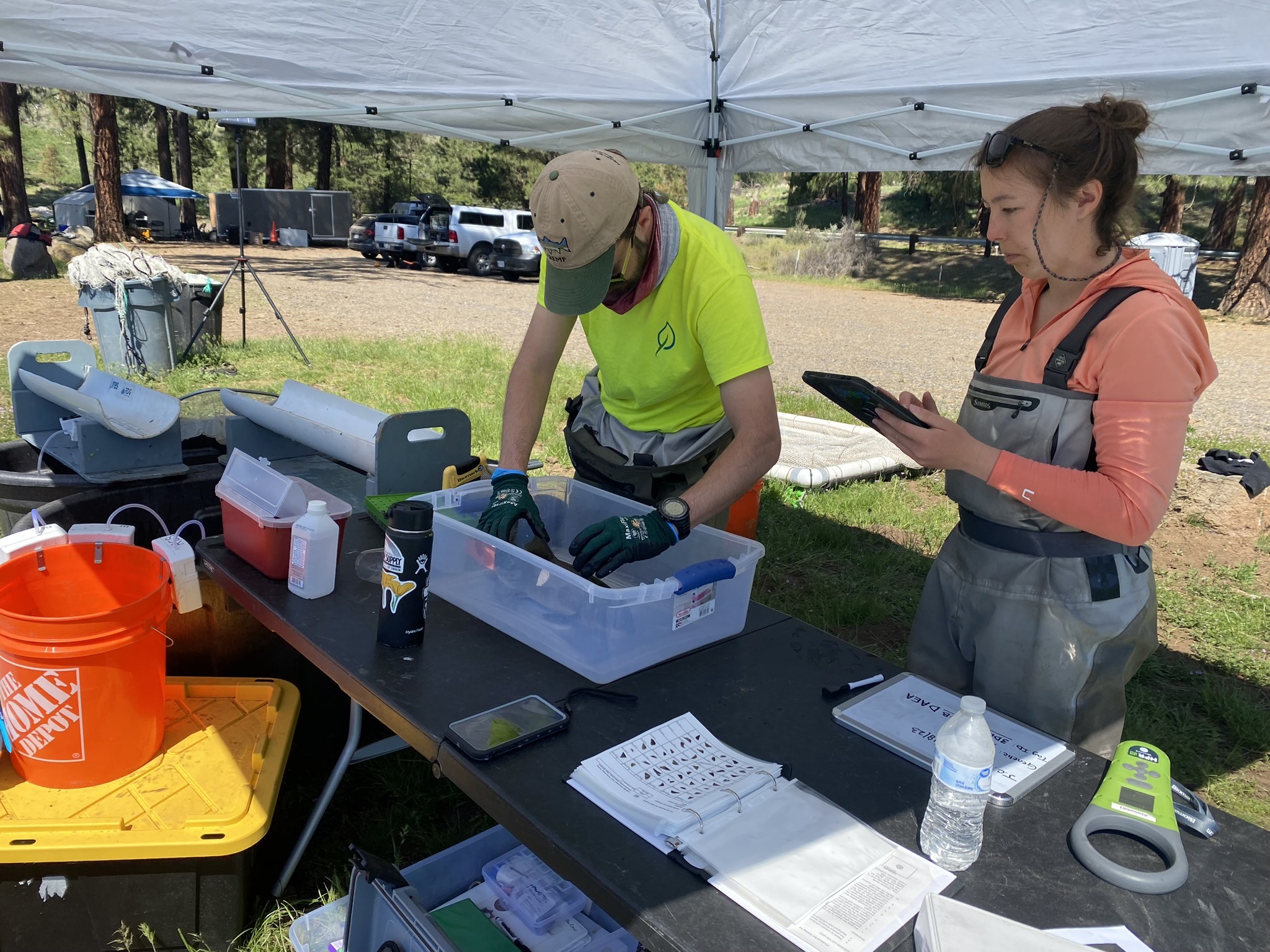
At fish camp, Steven Staiger and Olivia Vosburg, RES fisheries staff, take a fish through the processing steps needed to determine their condition, size, maturity, and species. Photo credit: Dan Chase
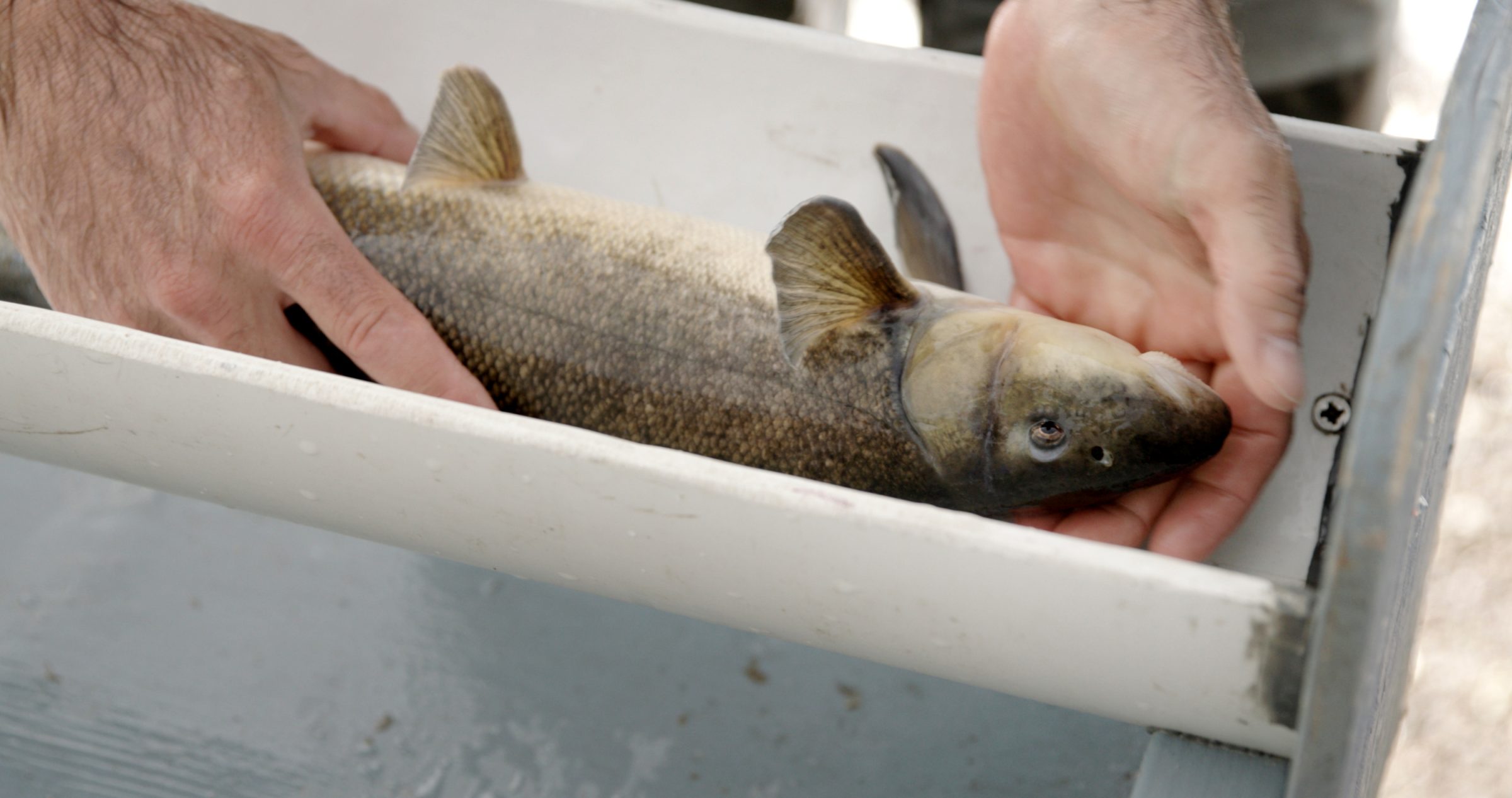
Handling the fish as gently as possible was part of giving these fish the respect they are due. The team kept the gravity of the work front of mind. This was a rare moment to handle species from diminishing populations that are fighting hard to survive. Photo credit: Shane Anderson
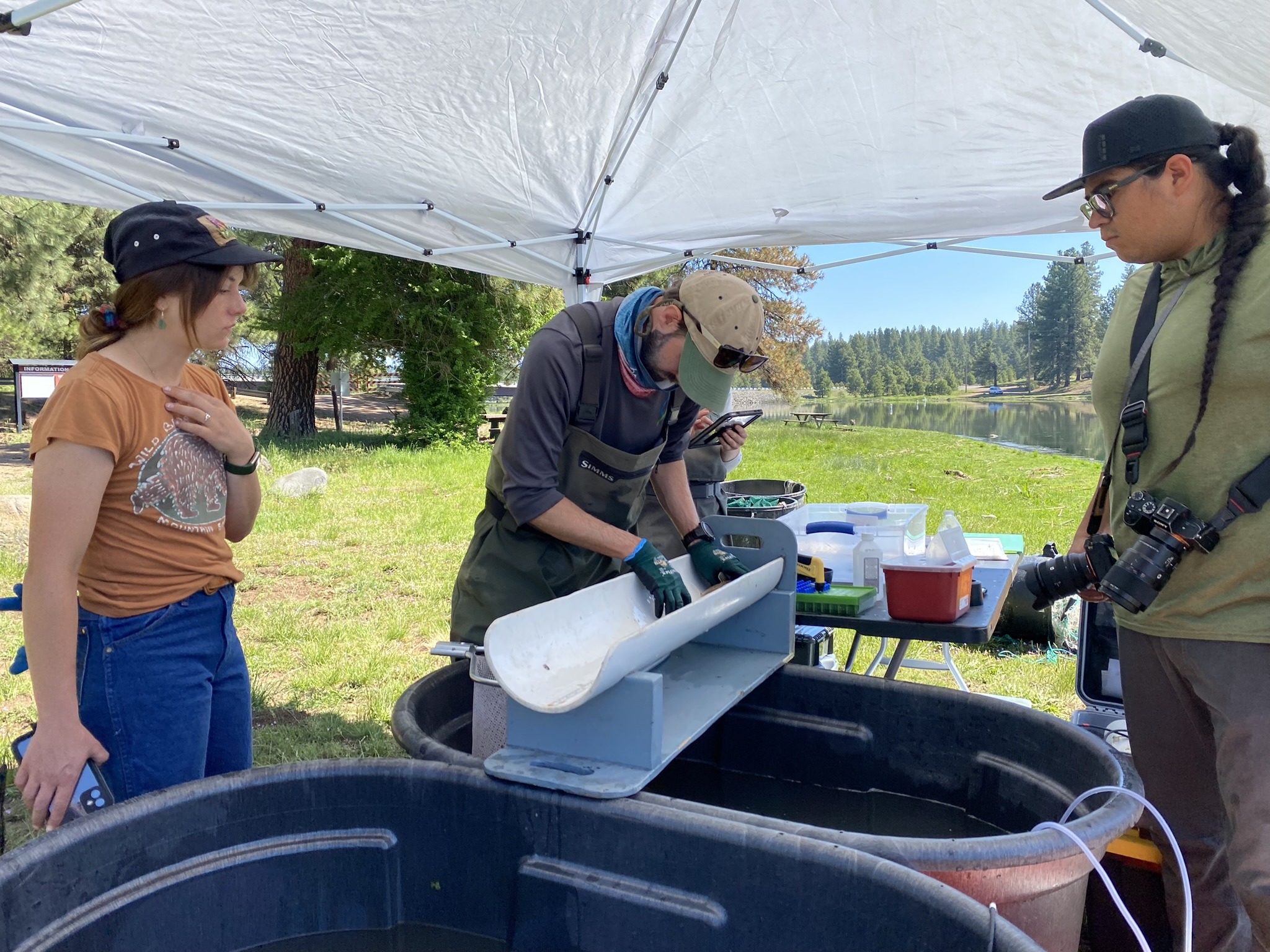
During fish processing, the RES team is joined by Klamath Tribes member Paul Wilson, photographer for the Klamath Tribes and the Sierra Club. Also pictured is Carlie Sharpes, a member of the Klamath Tribes fisheries program, who assisted with nighttime capture and daytime processing work during parts of the Oregon effort. Photo credit: Dan Chase
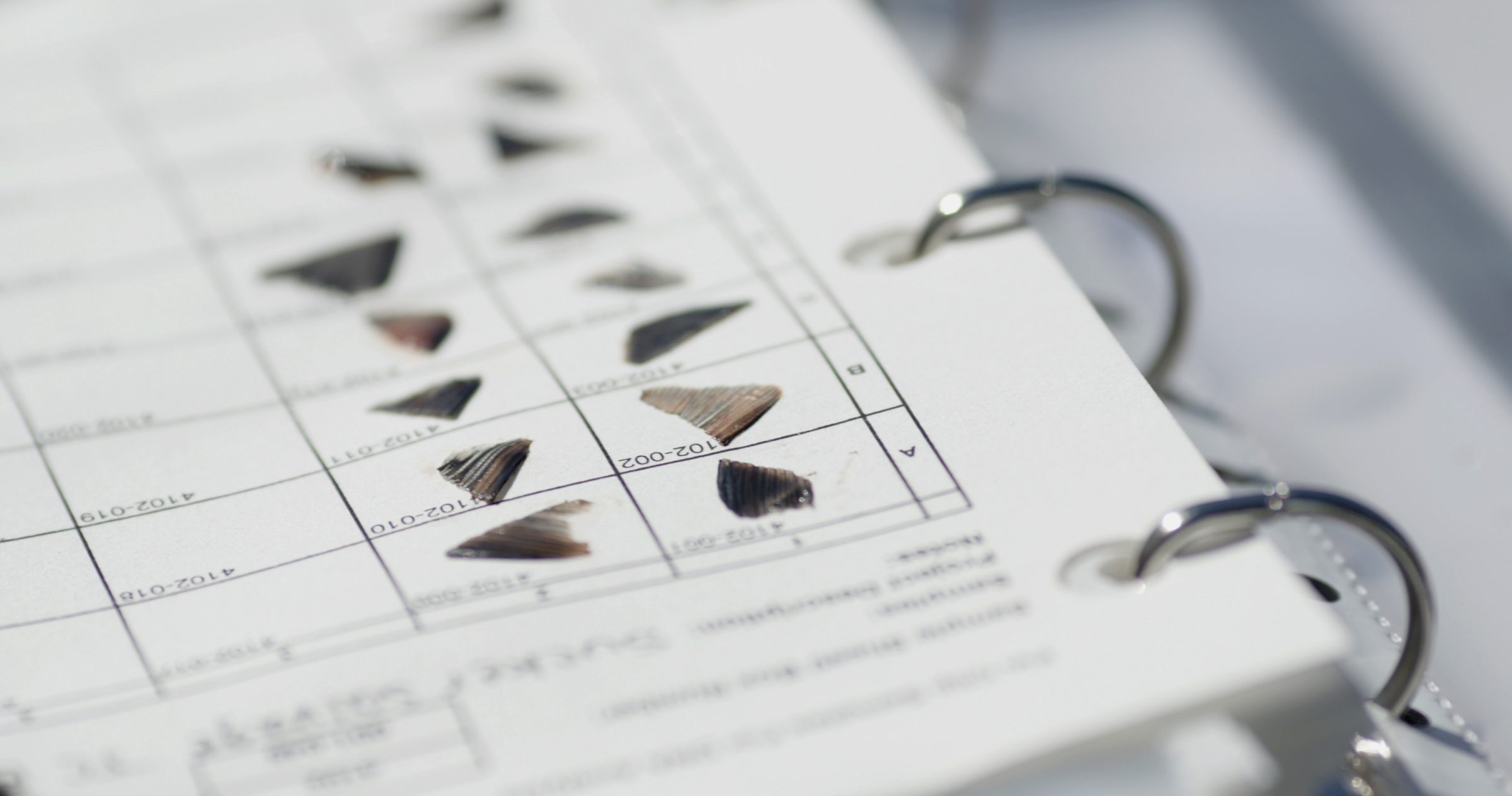
Genetic samples were taken from the caudal fin during fish processing. They will be analyzed by the USFWS to determine future management options for these imperiled fish. Photo credit: Shane Anderson
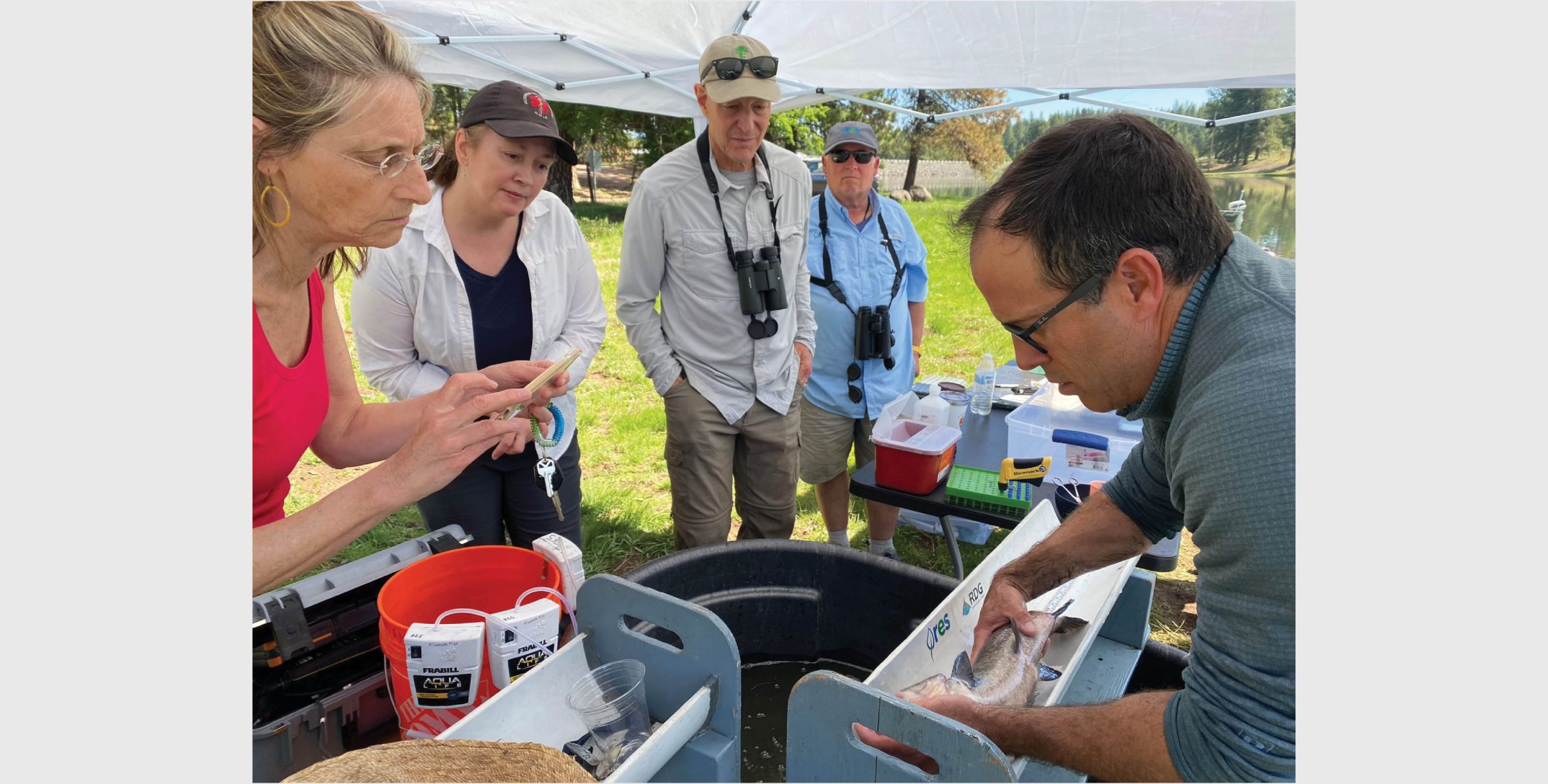
Strong coordination across the Klamath Tribes, USFWS, CDFW, ODFW, BLM, RES, River Design Group, and the Klamath River Renewal Corporation (KRRC) helped make the salvage operation a success. While RES’ primary role on the project is river restoration following dam removal, RES was happy to be entrusted with this important fisheries effort. Here, Troy Brandt with River Design Group, part of the team assembled by RES, demonstrates the identification traits biologists look for to distinguish specific sucker species to USFWS and KRRC. Photo credit: Dan Chase
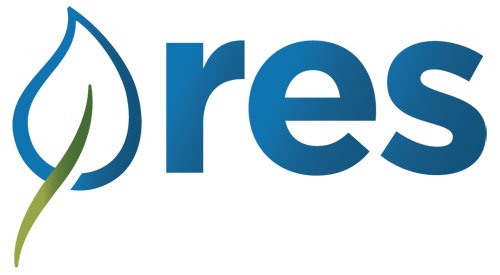
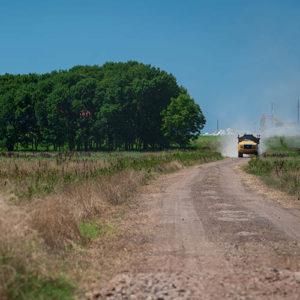
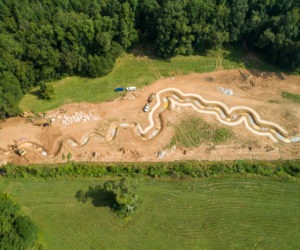
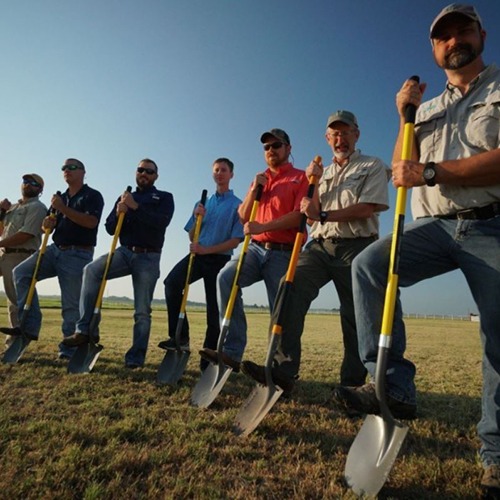 Read the latest news about RES, our projects and our people.
Read the latest news about RES, our projects and our people.
